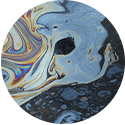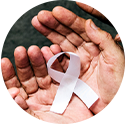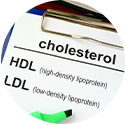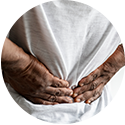Back pain will hit nearly 80 percent of the U.S. population at some point. For many, it becomes a chronic burden they suffer through on a daily basis.
At the Magaziner Center we’re proud of our success rate in using non-surgical treatments that don’t involve the use of dangerous drugs to relieve chronic back pain, be it from an accident, sports injury or simply aging. Below are some of the common back and spinal issues we specialize in treating.
- Bulging and herniated discs: These conditions, commonly from aging, can irritate nearby nerves, causing pain, tingling, numbness or weakness anywhere else in the body.
- Piriformis Syndrome: Characterized by spasms in the piriformis muscle, located in the buttock, beginning at the base of the spine and connecting to each femur. This muscle stabilizes the hip joint and is vital to lower body movements, including walking, shifting weight and keeping our balance.
- Functional Leg Length Discrepancy: Just what it sounds like, a difference in the length between the two legs. The larger the discrepancy, the more the body has to compensate in gait, posture and motion.
- Sciatica: When the sciatic nerve in the lower back is compressed, it causes pain originating just above the buttocks and shooting down the back of the leg. Since the sciatic nerve is the largest nerve in the body, this can be extremely painful.
- Sacroiliac (SI) Joint Dysfunction: Characterized as abnormal movement in the sacroiliac joint, causing inflammation and pain. This joint generally moves very little, and SI joint dysfunction can refer to either too much or too little movement.
- Degenerative Disc Disease: Pain, weakness, numbness and other symptoms associated with the degeneration of spinal discs. For some it may result in pain that can be severe and debilitating.
- Spinal Stenosis: A narrowing of the vertebrae, which causes the spinal canal to shrink and put pressure on the spinal cord and nerves within, is what’s known as spinal stenosis.
- Spondylolisthesis: Occurs when one vertebra, usually in the lower part of the spine slides forward, ending up out of place in relation to the vertebrae below it.
How they treat it
Mainstream medicine will generally treat back pain with medication, both NSAIDs and opioids, physical therapy and possibly surgery. NSAIDs, which include aspirin, Advil and Motrin, have powerful side effects that can lead to secondary issues, and it’s no secret anymore than opioids can easily become habit-forming and deadly. For the most part, such medications are prescribed simply to suppress the symptoms, not to cure the injury or condition. Oftentimes, they can actually prevent the body from healing properly by suppressing its natural responses, such as inflammation. Spinal surgery is an extremely risky proposition that has a long recovery time and no guarantee that it will fix the problem. We see many patients who have had surgery and still experience severe pain regularly.
How we treat it
At the Magaziner Center for Wellness, we have successfully treated treat back and spinal issues successfully for decades without resorting to surgery or risky medications. Using prolotherapy, Prolozone®, platelet-rich plasma and cellular regenerative therapies, we accelerate and enhance the body’s natural healing process. By combining these therapies with good nutrition, healthy nutraceuticals, energy medicine and osteopathic manipulation, we have been able to successfully reduce pain in thousands of patients. We also see many patients who have been treated for years with conventional approaches and have not found relief.
Research articles:
Epidural Spinal Injections – Will They Help You?
Epidural Spinal Injections – Will They Help You?
Treatment Options For Failed Back Surgery Syndrome
https://drmagaziner.com/news/the-best-way-to-treat-hernias/




































